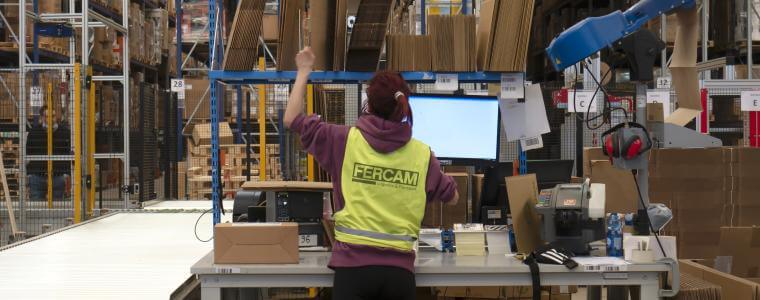
What are the stages of warehouse logistics?
Warehouse logistics is a crucial segment of the Supply Chain. From inbound to stock management and outbound, finally up to reverse logistics, knowing and correctly managing all phases translate into efficiency, speed and therefore a substantial competitive advantage for companies.

To define the phases of warehouse logistics, it is necessary to make a premise regarding the term "logistics". Logistics, derives from the Greek "logikós" (λογικός) "which has a logical sense", derived from "lógos" (λόγος), "order". Both concepts will turn out to be contemporary and closely related to each other. Today, in general, by Logistics we mean all skills which are useful for preparing and managing the supply chain’s various entities and actors, through a system of logical and well-structured ("ordered") processes. The more efficient and performing the logistics management, the greater the competitive advantages. Therefore, companies are increasingly aware that to improve and optimize the management of Inbound and Outbound flows within their Supply Chain, they cannot ignore the involvement of external actors and of their professional skills, to correctly handle the phases of the logistics process with a systemic and innovative approach.
A Supply Chain is an integrated network between the company and its suppliers that includes commercial partners, activities, and resources to produce and distribute goods to the final recipient. Good management and implementation of the Supply Chain over time allows companies to maximize their profits and improve their position in the market, thanks to a competitive advantage in terms of cost reduction, increased productivity, and ROI.
Planning is the fundamental phase of this process, because it helps to set up a model that can respond effectively and efficiently to the final requirements. Another decisive aspect is that of the identification of suppliers: above all reliability is sought, so that the production process is never compromised.
The result of the production process must be integrated with the warehouse logistics phase, i.e., the steps of managing inbound transport, storage, inventory, and delivery of the products in the right quantity and on time to the final recipients.
One of the most important aspects of warehouse logistics involves the management and constant development of the operational logistic flow. These are operational phases that are perfectly integrated with each other and aligned with the production cycle, which allow the transport and transformation of the goods throughout the journey from the producer to the final consumer.
Phase 1: transport from the manufacturer to the warehouse (inbound)
This macro activity includes all the various operations relating to the receipt of goods. With the support of well-defined and structured procedures through order management, control, barcode labeling and real-time traceability, the logistics operator is able to make all information relating to inbound operations available to the customer.
Phase 2: processing in the warehouse and stock management
This phase is integrated with both Inbound and Outbound operations. Warehouse activities support inbound operations with storage procedures (positioning and moving of any item) giving real-time evidence to the customer. They include a regular inventory of all products in the warehouse, namely updating the quantities, stocks and position of the goods. On the Outbound side, orders received by the customer for their final destination are prepared and processed.
Phase 3: transport from warehouse to final destination (Outbound)
This phase coincides with the integrated transport operations for the distribution of processed orders towards the recipient (cash & carry / retail warehouses / end customers).
Reverse Logistics
By Reverse Logistics we mean the process of planning, controlling and management of products from the final consumer to the company. In recent years, thanks to market dynamism, reverse logistics has undergone a significant evolution with the advent of e-commerce and social networks. Today there are some important aspects linked to Reverse Logistics that compel companies to structure and organize the reverse logistics process upstream of the Supply Chain. There are not only aspects related to the transport and transformation of products that have an impact on company management, but also financial, environmental and image or reputation aspects, which must necessarily lead every company to an assessment of any related risks. Therefore, an excellent organization, planning and management of reverse logistics can strategically allow a company to position itself competitively on the market.


 Language
Language

























